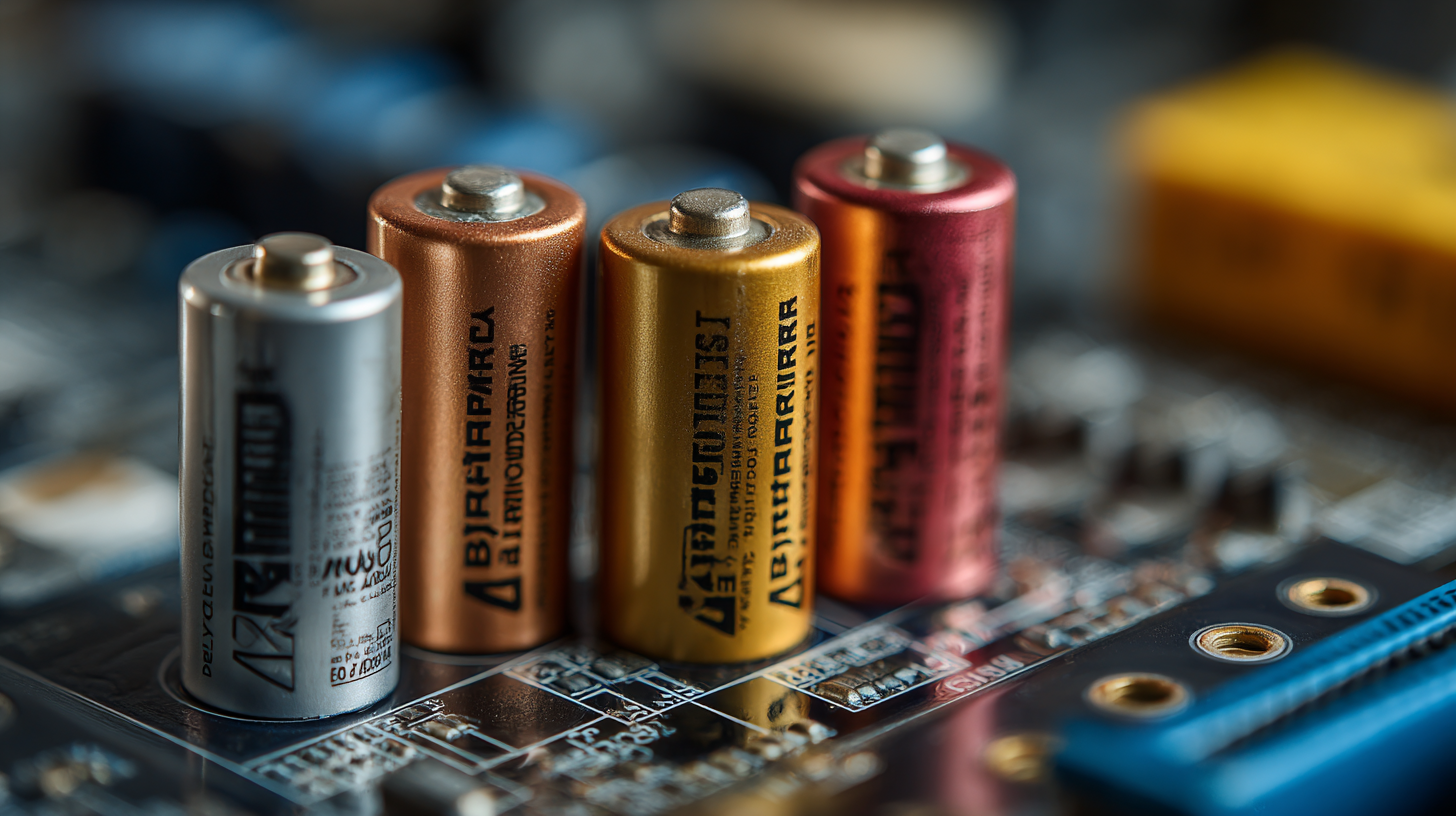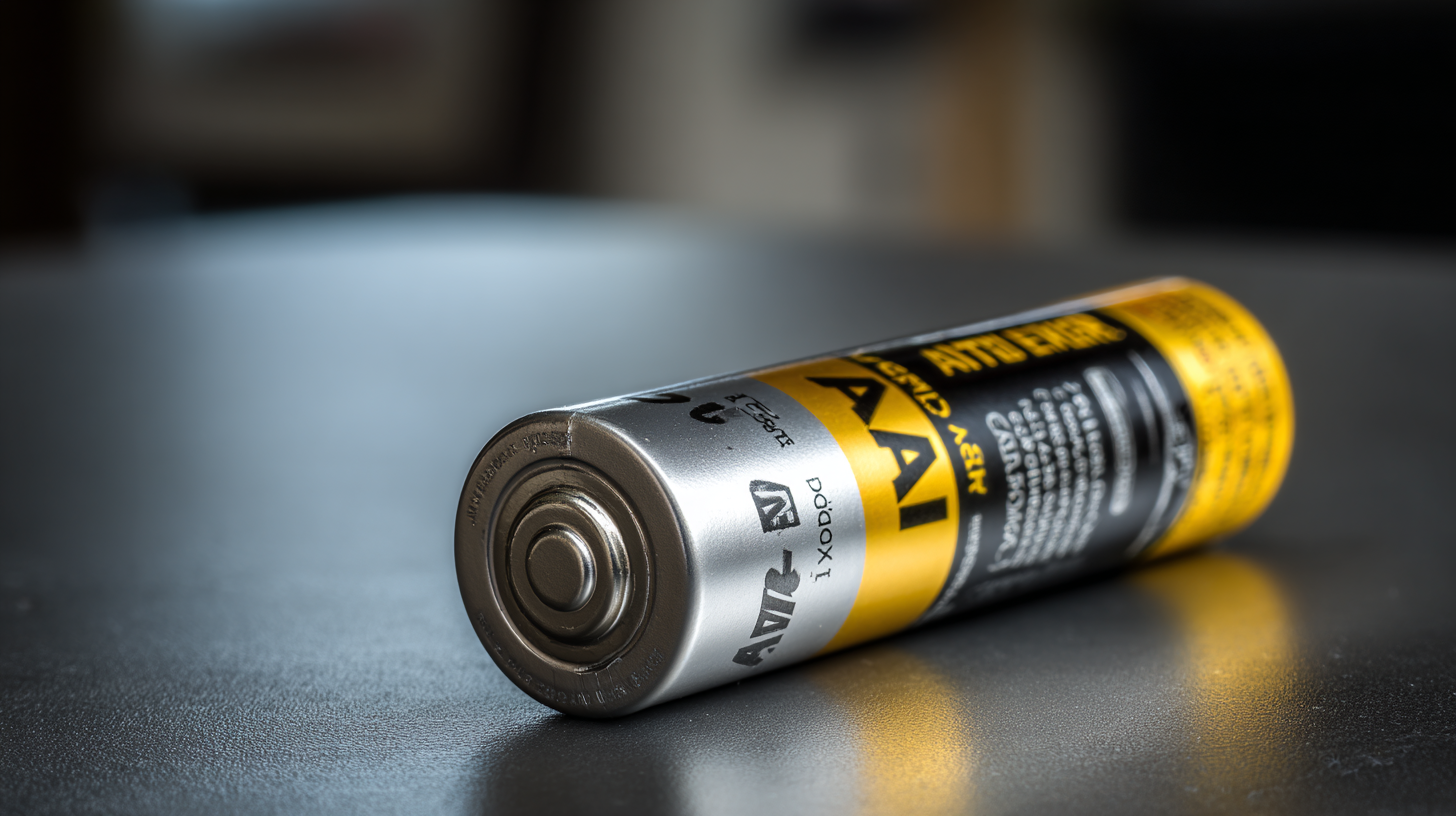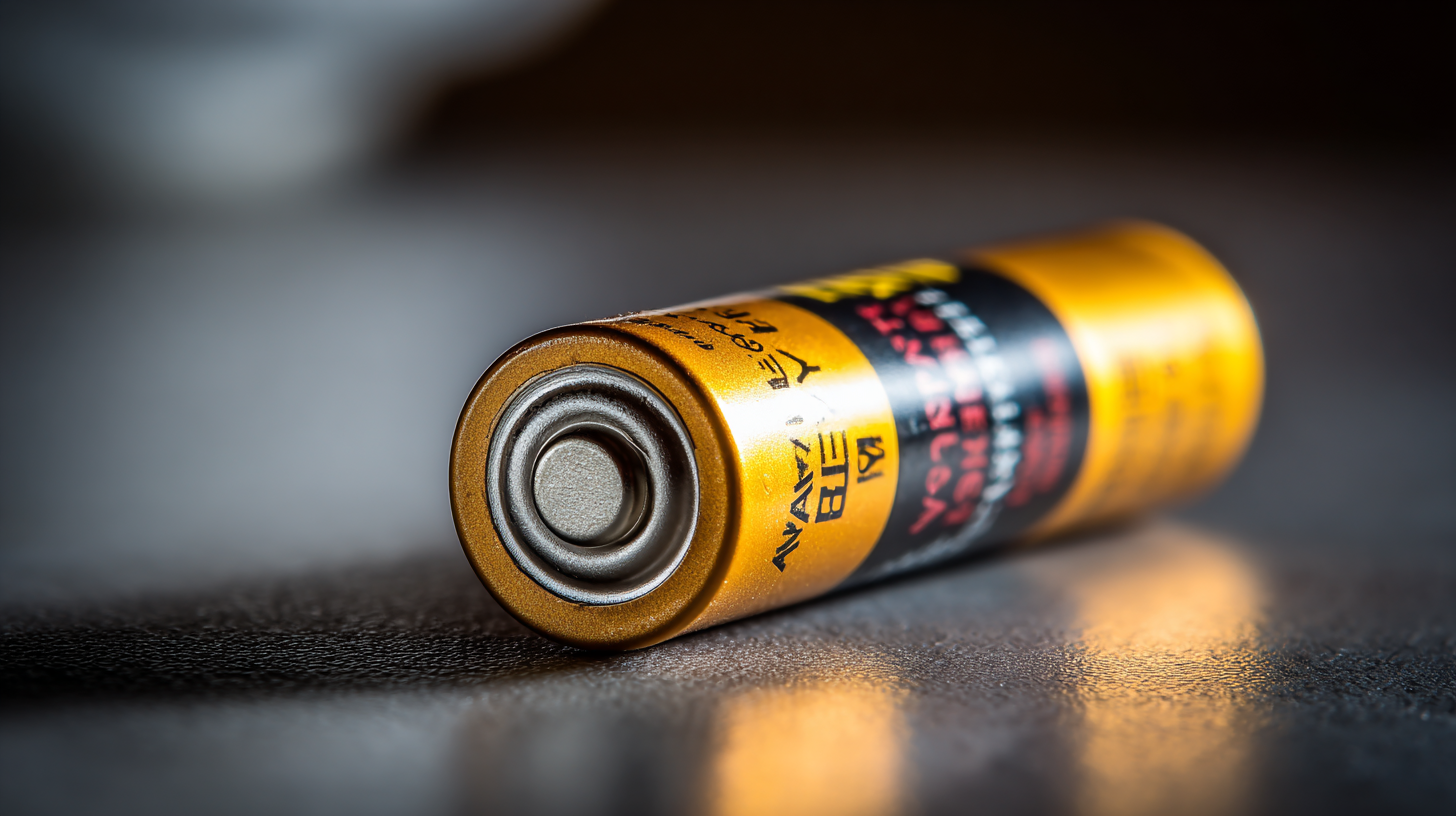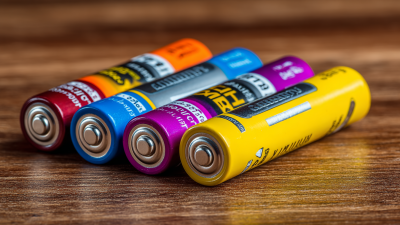How to Effectively Choose the Right AA Battery Replacement for Optimal Performance
When it comes to ensuring the reliable performance of your devices, selecting the right AA battery replacement is crucial. With a myriad of options available on the market, making an informed choice can become overwhelming. Factors such as battery type, capacity, longevity, and compatibility with your devices must all be considered to achieve optimal results. Whether you're powering up a remote control, a camera, or a children's toy, the right AA battery replacement not only enhances performance but also promotes safety and efficiency.

In this guide, we will explore essential tips and practical insights to help you navigate through the selection process, ensuring that you choose the best batteries to meet your needs and keep your devices running smoothly. By understanding the nuances of AA battery replacements, you can make confident decisions that enhance your everyday experiences.
Factors Influencing AA Battery Performance: Capacity, Voltage, and Chemistry Explained
When selecting an AA battery replacement, understanding the key factors influencing performance—capacity, voltage, and chemistry—is essential. Battery capacity, measured in milliampere-hours (mAh), indicates how much energy the battery can store. A higher capacity translates to longer-lasting power, making it crucial for devices that demand substantial energy, such as digital cameras or remote controls. Conversely, devices with lower power demands may function adequately with batteries of lesser capacity, highlighting the importance of matching the battery to the device’s energy requirements.
Voltage also plays a pivotal role in battery performance. Most AA batteries provide 1.5 volts; however, rechargeable varieties, like NiMH batteries, typically deliver about 1.2 volts. While this may seem negligible, certain high-drain devices may require the full 1.5 volts to operate efficiently. Additionally, the chemistry of the battery—alkaline, lithium, or NiMH—affects both longevity and performance characteristics. Alkaline batteries are usually best for single-use applications, while lithium batteries excel in extreme temperatures and offer longer shelf life. In contrast, rechargeable NiMH batteries are better for high-drain devices and are environmentally friendly due to their reuse. Choosing the right combination of these factors is essential for optimal battery performance and longevity.

Understanding Battery Chemistry: Alkaline vs. NiMH vs. Lithium for Optimal Use
When choosing the right AA battery replacement, understanding battery chemistry is crucial for optimal performance. Alkaline batteries are the most common type, known for their long shelf life and ability to deliver steady voltage over time. They are ideal for low-drain devices like remote controls and wall clocks. However, Alkaline batteries can struggle to perform in high-drain electronics, often suffering from voltage drop and reduced lifespan when used in devices such as digital cameras or gaming controllers.
On the other hand, Nickel-Metal Hydride (NiMH) batteries offer a significant advantage in high-drain applications due to their higher capacity and rechargeability. Unlike Alkaline batteries, NiMH batteries maintain a more stable voltage under load, making them suitable for frequently used devices. They can be recharged hundreds of times, making them an eco-friendlier option. For ultimate convenience and longevity, Lithium batteries provide excellent performance in extreme temperatures and have a higher energy density, although they are generally more expensive. Choosing the right chemistry not only enhances device efficiency but also aligns with consumer preferences for performance and sustainability.
How to Effectively Choose the Right AA Battery Replacement for Optimal Performance
| Battery Type | Chemistry | Voltage | Capacity (mAh) | Rechargeable | Best Uses |
|---|---|---|---|---|---|
| Alkaline | Alkaline | 1.5V | 2500-3000 | No | Toys, remotes, flashlights |
| NiMH | Nickel-Metal Hydride | 1.2V | 1800-2500 | Yes | Digital cameras, flash units |
| Lithium | Lithium | 1.5V | 3000-3500 | No | High-drain devices, professional cameras |
Evaluating Battery Capacity: mAh Ratings and Their Impact on Device Performance
When selecting the right AA battery replacement, evaluating battery capacity—measured in milliamp hours (mAh)—is crucial for ensuring optimal device performance. The mAh rating indicates how much charge a battery can hold, directly influencing how long it can power a device before needing replacement. For instance, a standard alkaline AA battery typically offers around 2,800 mAh, whereas premium lithium batteries can reach capacities up to 3,000 mAh. This difference may seem minimal, but it can significantly extend the life of high-drain devices like digital cameras, toys, and remote controls.

Research from the Battery University shows that devices requiring higher energy demands benefit greatly from batteries with higher mAh ratings. For example, a device that operates on a load of 400 mA could run for approximately 7 hours with a standard alkaline battery (2,800 mAh) but could last around 7.5 hours with a lithium alternative (3,000 mAh). Furthermore, higher-capacity batteries tend to maintain their performance greater over time, ensuring that users experience consistent output without unexpected shutdowns. This focus on mAh can help consumers make informed choices based on their specific power needs, ultimately enhancing the functionality and reliability of their devices.
The Importance of Battery Shelf Life: How Expiration Dates Affect Efficiency
When selecting the right AA battery replacement, understanding the implications of battery shelf life is crucial for optimal performance. Shelf life, often indicated by expiration dates, directly influences a battery's efficiency. Recent advancements highlight that the longevity of batteries, particularly lithium-ion types, can significantly affect their performance in various applications. A study on lithium-ion battery degradation indicated that batteries used in electric vehicles (EVs) not only degrade over time but also respond differently depending on their charging protocols. This understanding can help consumers make informed choices regarding replacement batteries.
Moreover, data suggests that the shelf life and effective management of battery usage can greatly influence long-term costs and sustainability. For instance, businesses and consumers alike are turning to advanced predictive technologies, such as AI, to estimate battery longevity accurately. Reports have shown that implementing AI-driven models could enhance the operational lifespan of batteries, ultimately leading to better resource management and reduced waste. As awareness of battery performance evolves, recognizing the impact of expiration dates will enable users to achieve a more efficient balance between performance and sustainability in their battery choices.
Battery Shelf Life and Performance: Understanding Expiration Impact
This chart illustrates the relationship between the shelf life of AA batteries and their performance efficiency over time. As batteries approach their expiration date, a noticeable decline in performance can be observed.
Choosing the Right Brand: Industry Statistics on Battery Reliability and Longevity
When selecting the right AA battery replacement to ensure optimal performance, one crucial factor to consider is the brand's reliability and longevity, heavily supported by industry statistics. Major battery manufacturers often invest significantly in research and development, leading to advanced technologies that enhance battery life and decrease the risk of leakage. According to a recent survey, premium brands outperform generic ones by at least 30% in terms of lifespan, thus providing better value for consumers in the long run.
Moreover, understanding brand reputation can also guide your decision. Industry leaders often receive higher ratings for customer satisfaction and reliability due to their consistent track record. Many retailers provide feedback and reviews, which can further illuminate how a brand performs under various conditions. For example, brands that maintain a strong position in the market often have warranties or guarantees that reflect confidence in their product's longevity. By prioritizing trusted brands with verified performance metrics, consumers can enhance their experience and maximize the efficiency of their devices.
Related Posts
-

Innovative Solutions for Long Lasting aa Batteries in Modern Electronics
-

Ultimate Guide to Double A Batteries Comparing Performance Lifespan and Efficiency
-

Ultimate Guide to Understanding AA Batteries Performance Ratings and Lifespan
-

How to Choose the Best Bulk AA Batteries for Your Business Needs
-

Ultimate Guide to Comparing the Best AA Batteries for Every Need
-

Empowering Innovation: How Chinese Manufacturing Leads the Charge with Best Double AA Batteries
